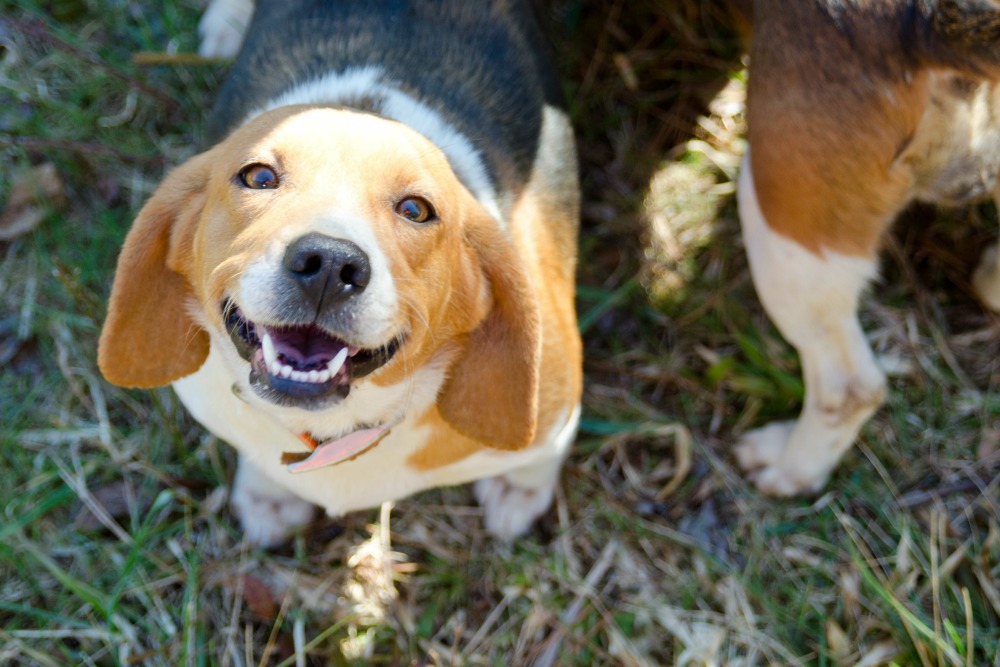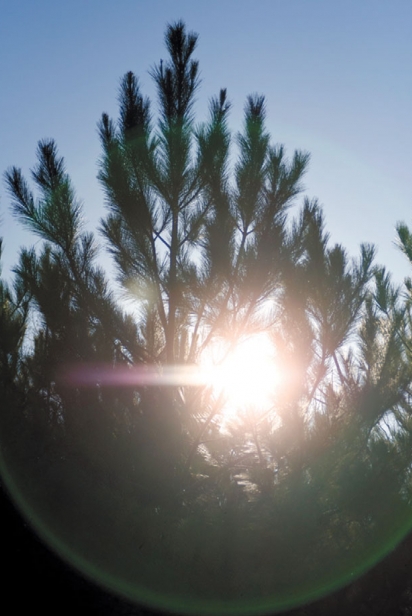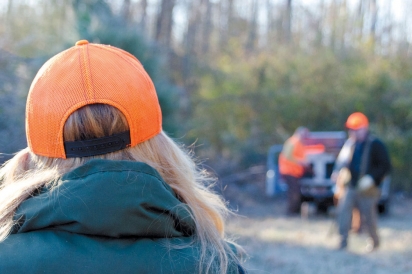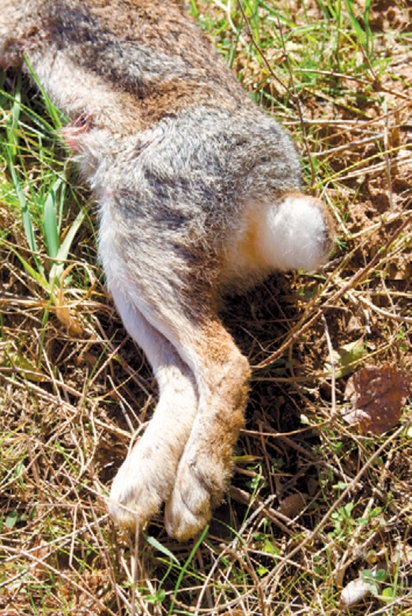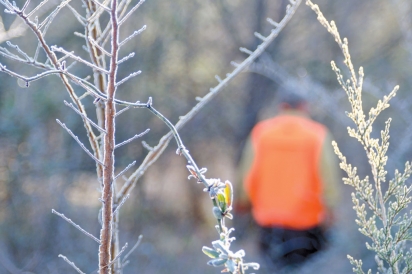Following The Rabbit Down
Late last February I set out to hunt rabbit with a group consisting of some friends, two life-long hunters, edible photographer Brian Kelley, and a bandwagon of misfit beagles. We knew a guy who knew a guy whose family owned a parcel of land just off Fork Shoals Road, and he was kind enough to let us on it.
The closest I’d ever come to hunting was Murrell’s Inlet, fifth grade, when I fashioned a necklace out of fish heads and twine, hung it on a dock pole, and waited for crabs to come. Which they did, though I hardly noticed, too deep in my R.L. Stine paperback and Rhythm of the Saints album.
I don’t eat meat. I once nursed two baby bunnies back to health after one of our dogs took a claw to them without having enough decency to kill them all-the-way. I’m basically the worst person you could assign to write this story.
We set out just after 8 am, our bellies drive-thru-biscuit-full, me dressed in a friend’s daughter’s hunting clothes. Someone argued cottontail was the best. Someone else said swamp rabbit. Mostly I kept quiet and listened for the hunters who listened for the dogs who listened for the rabbits.
The lanes we walked between trees were wide and down them we could see clear and far. While most of the dogs kept low in the brush, focused, and together, one fell time and again into the lane, distracted or looking for fun.
“That’s Millie,” one of the men said. “She don’t ever want to hunt, so I bunk her at night with the smart one, June, hoping she’ll learn something. Doesn’t seem to be working.”
Growing up, I spent winter break at my grandfather’s house in Louisiana. My pops—a Navy man who carried a penchant for jokes and Evan Williams—did not, as it turns out, find humor in his granddaughter’s stepping out of line. That dog won’t hunt, he’d warn when I snuck a second ice cream sandwich from the outdoor freezer. That dog won’t hunt, he’d say when I pegged the neighbor’s dog with ping-pong balls.
I’d never before considered the literal translation of that phrase, and immediately felt a kindredness with this Millie.
“Owl,” says Rabbit shortly, “you and I have brains. The others have fluff. If there is any thinking to be done in this Forest—and when I say thinking I mean thinking—you and I must do it.”
Rabbits evaded us most of the morning. The dogs worked a track, got close, maybe someone made a shot, but then they double backed or moved too fast for the beagles, for us. They’re wizened enough to stay clear of crossing the wide opened spaces of lanes.
But by afternoon the hunters shot three in quick succession. The men took pictures with their kill, then gutted the rabbits quickly. A skillful, almost admirable thing, and equally difficult to witness.
Weeks later Brian will email me the pictures attached to this note: Some of the photographs are pleasant, while others are kind of graphic. I didn’t include any of the rabbit guts hung up in trees, but I’ll send a few along if you find them necessary for storytelling.
Teryi Youngblood, chef of Passerelle Bistro, is tough. She’s the kind of woman who names a pet pig Lardon and grew up with an uncle who hung the deer he killed on her swing set. Breaking down a rabbit and cooking, she explains to me, can be as wily a process as catching one.
When asked how she learned, Teryi says, “I watched a lot of YouTube videos. I consulted Google. But as my husband (Lazy Goat chef Steven Musolf) likes to say, 80% of what we do in this business is instinct.”
Or, in the words of late poet Frank O’Hara, You just go on your nerve. If someone’s chasing you down the street with a knife you just run, you don’t turn around and shout, “Give it up! I was a track star for Mineola Prep.”
My friend Jeff Bannister—businessman, man about town, and the brains behind food festival Bovinoche—has hunted rabbit since he was a kid growing up in Holly Hill, South Carolina. “The main way people screw it up is by cooking it on the grill or deep frying it. Rabbit needs a moist environment.” He enjoys the rabbit and dumpling stew Chef Anthony serves at Bacon Brothers, which takes about a full day to prepare.
Teryi learned quickly how easy it is to ruin rabbit. “I asked my sous chef to retrieve the loins and he ended up just obliterating them. You have to cut close to the bone and there’s so little meat to begin with.” Because of their leanness—rabbits’ hearts beat twice as fast as ours—Chef likes to prepare them with fat. She stuffs the loins with forcemeat, nuts, apricot. She brines them in caul fat, poaches them, wraps them in bacon, throws them in a hot oven to make crisp the outside.
“Because it’s delicate; it feels very French to me,” Teryi says, when I first ask why she enjoys rabbit, but then she reconsiders. “Maybe, actually, a lot of it has a lot to do with the heritage, the ceremony of the hunt—like quail or anything else. Rabbit is a thing you’re taught to do. You learn from them how to kill, how to cook.”
And the rabbit in no part of the process makes it easy. Not the chase, not the dish. She’s fast, elusive—one minute you think you have her, the next you don’t—which is perhaps in part why in the end she’s so satisfying.
“Hallo, Rabbit, isn’t that you?” Pooh asked . “No,” said Rabbit, in a different sort of voice this time.


